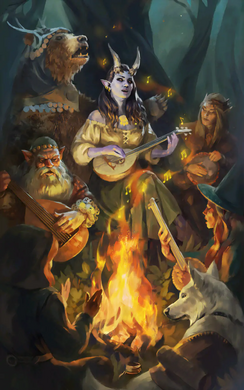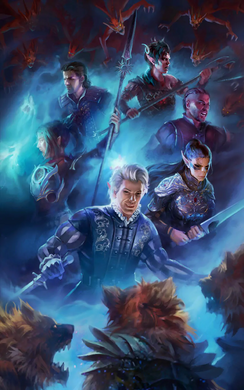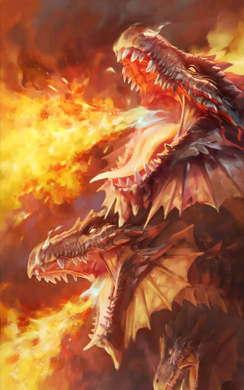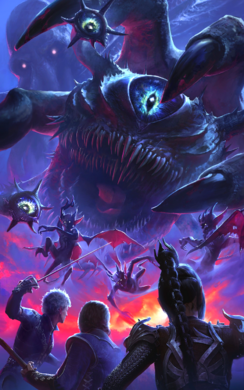Ad placeholder
Gameplay mechanics
This page is in the process of being constructed or reformatted. You are welcome to contribute as well. Last edited on 2024-07-14. If multiple days have passed since, this template should be removed. |
Baldur's Gate 3 is a turn-based adventure with a wide variety of gameplay mechanics. Understanding the core mechanics can help the players navigate the challenging world of Baldurs Gate 3.
This page will give a general overview over the most important aspects, to understand certain nuances, reading linked articles might be required. Every section has a dedicated wiki page with further information.
Difficulty
There are five difficulty settings, or modes: the preset Explorer, Balanced, Tactician and Honour modes – as well Custom mode, which lets the player tweak various gameplay elements.
Combat mechanics
The combat mechanics in Baldurs Gate 3 evolve around each character and enemy taking turns, based on their initiative roll at the start of combat, reminiscent of Dungeons & Dragons 5th Edition.
Turn-based System
A turn is the most basic unit of time in Baldur's Gate 3 gameplay. During combat, each creature takes a turn, usually in sequential order. When all creatures have taken their turns, a round has passed.
When two or more allied creatures are in close proximity to each other and would have otherwise taken their turn immediately after each other, they can usually take their turns at the same time.
While turns are primarily featured in combat, a turn-based mode is also available outside of combat, and automatically turns on in certain scenarios, such as when certain traps are activated.
Turn order
The order in which creatures take their turn (the turn order) is decided by rolling for initiative, which is a 1d4 + Dex mod roll.
Adjacent creatures in the turn order they share their turn order position and can act interchangeably. For this matter, creatures who are summoned by the player but not controlled by the player, such as the ghouls from the Necromancy of Thay, are not considered to be on the player's side.
- The maximum group size for a shared turn order position is 10 creatures.
If a creature that is attacked is unaware of their attackers at the start of combat, the first round of combat is declared a surprise round, during which only the attackers may take actions.
Action economy
Most creatures are able to take one ![]() Action, one
Action, one ![]() Bonus Action and one
Bonus Action and one ![]() Reaction per turn, but some equipment and class features give additional or free actions.
Reaction per turn, but some equipment and class features give additional or free actions.
Actions, bonus actions and reactions are also represented as resources that are replenished at the start of a creature's turn. For example, when a creature takes an action, their action resource is used.
Resources
Most actions require the acting creature to expend one or more resources, usually at least one of the three common resources associated with actions:
 Action
Action Recharge: turn (1 action)
Recharge: turn (1 action)
- Primary combat resource
 Bonus action
Bonus action Recharge: turn (1 bonus action)
Recharge: turn (1 bonus action)
- Secondary combat resource
 Reaction
Reaction Recharge: turn (1 reaction)
Recharge: turn (1 reaction)
- Used to take reactions
Dice Rolls
Dice rolls are a central game mechanic to determine the outcome of variety of situations, such as whether a character will succeed at using a particular skill, or if an attack will land and how much damage it will do. The base dice are as follows:
 d4
d4 d6
d6 d8
d8 d10
d10 d12
d12 d20
d20
Additional modifiers can be applied, which are either bonuses which add to the result, or penalties which are subtracted from it.
Advantage
![]() Advantage and
Advantage and ![]() Disadvantage only apply to
Disadvantage only apply to ![]() d20 rolls for Attack Rolls, Saving Throws, and Ability Check, but never to Damage Roll, greatly affect the outcome of dice rolls.
d20 rolls for Attack Rolls, Saving Throws, and Ability Check, but never to Damage Roll, greatly affect the outcome of dice rolls.
Attacks
Attacks are attempts by a creature at hitting a target, usually with a weapon or a spell. The outcome of an attempted attack is determined by making an attack roll against the target's AC. If successful, the attack may deal damage and/or inflict a condition.
Critical Hit
Critical hits occur when a creature rolls a natural 20 on an attack roll. While initially a mechanic subject purely to the whims of luck, a number of features, abilities, and items allow the player to manipulate the odds of scoring a critical hit.
NPCs
Non-player characters are characters not controlled by the player. They have pre-determined behaviours and defined ability scores, class actions, and inventories. NPCs can be divided into a number of archetypes that are not necessarily mutually exclusive, such as Traders and Bosses.
Classes
All Humanoid creatures, including the player character and all party members, has a class. Player characters and all companions also have a background, and can use equipment. Having levels in a class allows access to class features, which are the features that set classes apart from each other.
Classes may also grant access to spells and feats.
Spellcasting
While all classes are capable of casting spells, some classes are proficient in spellcasting, and automatically learn spells. These classes may cast these learned spells using spell slots.
Every class – including those without the Spellcasting feature – has a designated ability known as their spellcasting ability
Spells are created from the Weave, the magical energies of the multiverse. They are conjured through experience, knowledge, or innate ability, or via the use of scrolls and magical items.
Stats
All creatures have hit points that determine how much damage it can take, and abilities which are used in calculation of dice rolls.
Other important stats include Armour Class, proficiency bonus and resistances.
Conditions
Conditions are the lingering effects of certain spells, class features, equipment or environments. They usually have a set duration, but some may last until the party has taken a long rest.
Equipment
Weapons
Having a weapon equipped grants a character access to special actions only usable while wielding that weapon. These are usually special attacks that can do bonus damage, hit multiple targets, debilitate foes, or move the character



